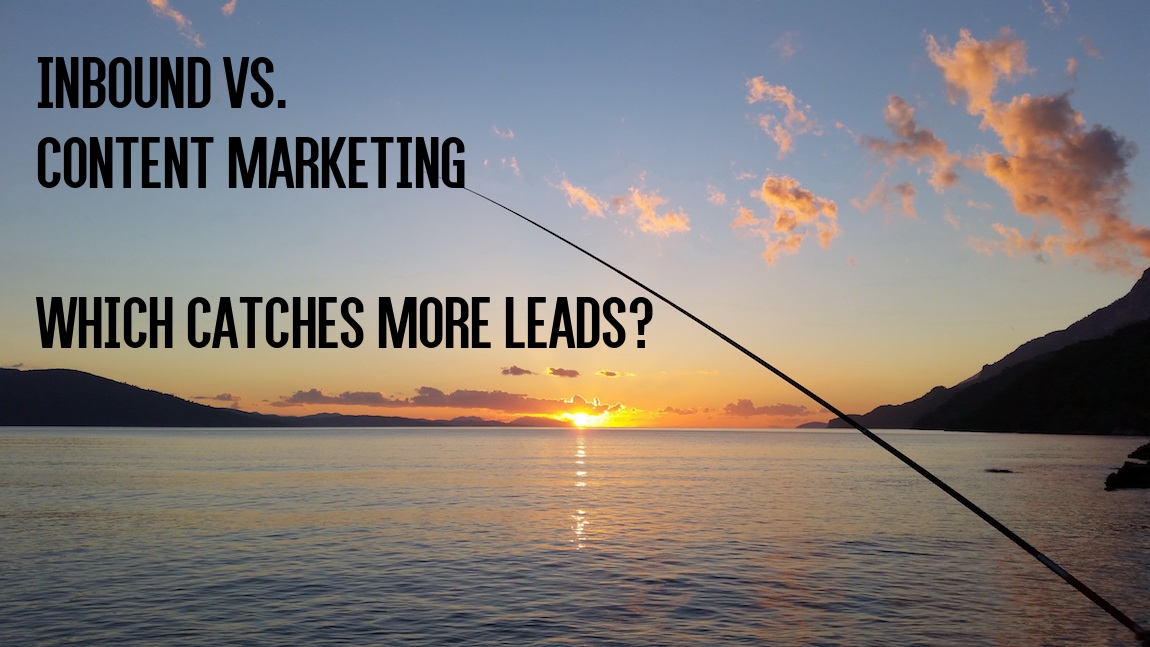by MGB2B
 The Content Marketing Institute recently released its annual report: 2017 Manufacturing Content Marketing: Benchmarks, Budgets, and Trends North America. And the results are promising for manufacturers this year. Many who were stuck are starting to find their way through the world of content marketing. And lots of manufacturers are starting to see results.
The Content Marketing Institute recently released its annual report: 2017 Manufacturing Content Marketing: Benchmarks, Budgets, and Trends North America. And the results are promising for manufacturers this year. Many who were stuck are starting to find their way through the world of content marketing. And lots of manufacturers are starting to see results.
Here Are 6 Key Content Marketing Stats for Manufacturers — and What They Mean for Your Business:
- 85% of Manufacturing Marketers Are Using Content Marketing to Reach Their Prospects.
What that means for you: Content marketing may not be part of your marketing plan, but it is likely something your competitors are doing. If you are using content marketing, it’s important that you differentiate your content. The content you are producing should resonate with the audience but also reflect your brand’s strategic positioning in order to accomplish this.
- Of Those Who Don’t Use Content Marketing, 53% Plan to Do So Within the Next Year.
What that means for you: Again, if content marketing is not part of your marketing strategy, 2017 is the year to get it going. Your competitors are likely already on the content train.
- 92% of Content Marketers in the Manufacturing Sector Use Email to Distribute Content.
What that means for you: There are many ways to distribute content, but email is one of the most frequently used. What’s more, manufacturers in particular have success at getting their prospects to open their emails. So having an email program is a must, but it’s also important to know how to do it right. That includes everything from proper segmentation of your lists to intuitive design based on the user experience.
- 63% Proclaim SEM to Be the Most Effective Method for Promoting Content.
What that means for you: Along with email, Paid Search should be among your distribution tactics when you’re ready to put your content out there. It’s an effective way to get new leads — one that can be fine-tuned easily and quickly. You should also consider hiring an SEO Specialist or an agency that can help you with all aspects of Search Engine Marketing — both paid and organic.
- 82% Are Running Print Ads to Promote Their Content.
What that means for you: Advertising in Trade Publications is far from dead. In fact, there are many reasons why you should strengthen your relationship with your trade pub reps. Chief among them — you can score opportunities to promote your content digitally to their lists and drive new leads into your sales funnel.
- 69% of Manufacturers Who Do Content Marketing Attribute Their Success to Good Strategy.
What that means for you: A Content Strategy is one of the most important parts of a successful content program. If you’ve skipped this step, it’s a good idea to go back and make sure you have a plan before you start creating and distributing content in 2017. Make sure your Content Strategy is well-documented so you can measure its success at several points throughout the year.
As you prepare for 2017, Content Marketing is an essential tool to have in your arsenal. If you haven’t already, it’s time to surpass your competitors, and establish yourself as the authority in your industry.
Continue Reading
by MGB2B

The Myth: Content Marketing and Inbound Marketing Are the Same Thing.
The Truth: Content Marketing Expands Well Beyond Just Inbound.
One mistake marketers make fairly often is confusing Content Marketing with Inbound Marketing. They see them as one and the same, when in reality Inbound Marketing is just a child of Content Marketing. Let’s take a closer look.
First off, when we talk about content, here are some examples of what we’re referring to:
- Blog Posts
- Podcasts
- White Papers
- eBooks
- Social Media Posts
- Videos
Content Marketing is simply how you distribute content to your target audience. The way you do it can make or break your marketing campaign. Sometimes, Content Marketing takes the form of Inbound Marketing.
So, How Does Inbound Marketing Work?
Inbound marketing is a simple concept. It generates strong leads for B2B brands because it lets the buyer find you instead of you hunting them down as you would with Outbound Marketing. It is passive marketing – you leave your fishing hook in the water and wait for the fish to come and take your bait. So the goal is to make your bait as attractive as possible by optimizing the content on your website and social media sites. If your content is good, hopefully others will use them as inbound links on their sites. This gives you credibility, not only to prospects, but to Google, who will then be more likely to put you at the top of the search list.
The goal of Inbound Marketing, is once you draw a prospect to your content, you can capture their information, and they become a lead that you can now contact and (hopefully) convert.
But this is only one way to use content.
Okay, What About Content Marketing?
Content Marketing encompasses more than just Inbound. It’s been around much longer than you might think. John Deere started doing it back in 1895 by creating The Furrow, an agricultural magazine that would appeal to his customers and prospects (millions of them). Walt Disney was a master of Content Marketing as early as 1954. Both the Deere and Disney brands have been distributing their content to mass audiences since long before the Internet was even invented, never mind Inbound Marketing.
But we needn’t put the division line between Inbound and Offline. There are other ways to drive people to your content online that are not considered Inbound Marketing. Optimizing your content can get you hot leads who are searching for what you offer, but Outbound allows you to widen your net a bit. It’s basically marketing as you’ve always known it, but used to drive readers to content instead of to build awareness of your brand. With Outbound, you drive people to your content via:
- Social Media Ads
- Online Display Ads / Retargeting
- Paid Search
- E-blasts via Trade Publications
- Webinars with Relevant Trade Publications
- Email Campaigns (though there is debate as to whether this is considered Inbound or Out)
As you can see, Content Marketing is a wide umbrella, and Inbound a highly effective methodology that falls beneath it. Their goal is the same: to get prospects into your sales funnel. The key is to have good content that can increase the number of leads you get from both your Inbound and Outbound efforts. Try what you think will work best for your target audiences, measure the effectiveness of each piece of your campaign, and fine-tune it until you have a well-oiled Inbound and Outbound Content Marketing machine.
Continue Reading
by MGB2B

The Myth: B2B Content Is Business-Only, So Keep It Dry
The Truth: Bored Prospects Will Drop You Like a Hot Potato
B2B prospects are in business mode. But they are, in fact, people. They get bombarded with content every day, so you need to make yours count. It doesn’t have to be mind-blowingly creative, but it does have to be interesting enough to keep the attention of your prospects and informative enough to give you credibility and establish your brand as an authority in your category.
Here are some quick tips to add some edge to your content while keeping it effective.
- Start with Personas. If you’re unfamiliar with personas, they are a representation of your ideal customer, and an important element to have in place before you even start creating your content. You craft personas using market research on your existing customers. Unlike a broader target audience, you can include a lot more in your personas, like what they do in their spare time, what they care most about, and what keeps them up at night. The most interesting content addresses these key issues instead of just talking about what makes your brand so great. Done correctly, personas are one of the most important parts of your B2B content marketing strategy, not to mention your overall marketing strategy.
- Keep it Conversational. B2B content has a reputation of being formal and dry. Try writing like you talk, or better yet, hire someone who’s been doing it for years (or an agency who has one on staff). Adding personality and emphasizing the more human qualities of your company – sometimes even using humor if it works well – will make your brand seem more relatable.
- Show Some Emotion. You are not a robot. Use emotion to appeal to the values of your audience. Emotions come into play whether your prospects are making personal decisions or business decisions. This is why developing personas that incorporate what your ideal customer cares about – both at work and at home – is important. Your content will be written to influence the emotions that surround what your audience is passionate about.
- Incorporate Relevant Trending Topics. Relevant is the key word here. Referencing a little pop culture or a current trend is a good way to spice up your B2B content, but it can’t feel forced. Peruse the trends in your industry and listen to what people are talking about at the water cooler, and see if it can fit into your content naturally. Big piece of advice: avoid politics at all costs.
- Break It Up. There is without a doubt information you need to include in your content to get your point across and educate your audience. But clumping this content into one long, dragged-out paragraph will bore your readers. Try breaking up your text with bolded headlines, visuals, numbered lists, bullet points, and quotes or bite-sized pieces of information. When you’re done creating content, take a step back and ask yourself, “is this scannable?” If the answer is no, you need to break it up even more.
- Get Visual. Your insights don’t always have to live as only words. Infographics, charts, photography, and videos are engaging ways to present valuable data. Considering that articles with visuals get 94% more views, this is a pretty important piece of advice.
Hope these tips help you as you start adding some fun into your content program. If you need any more advice about B2B content, feel free to drop us a line.
Continue Reading


